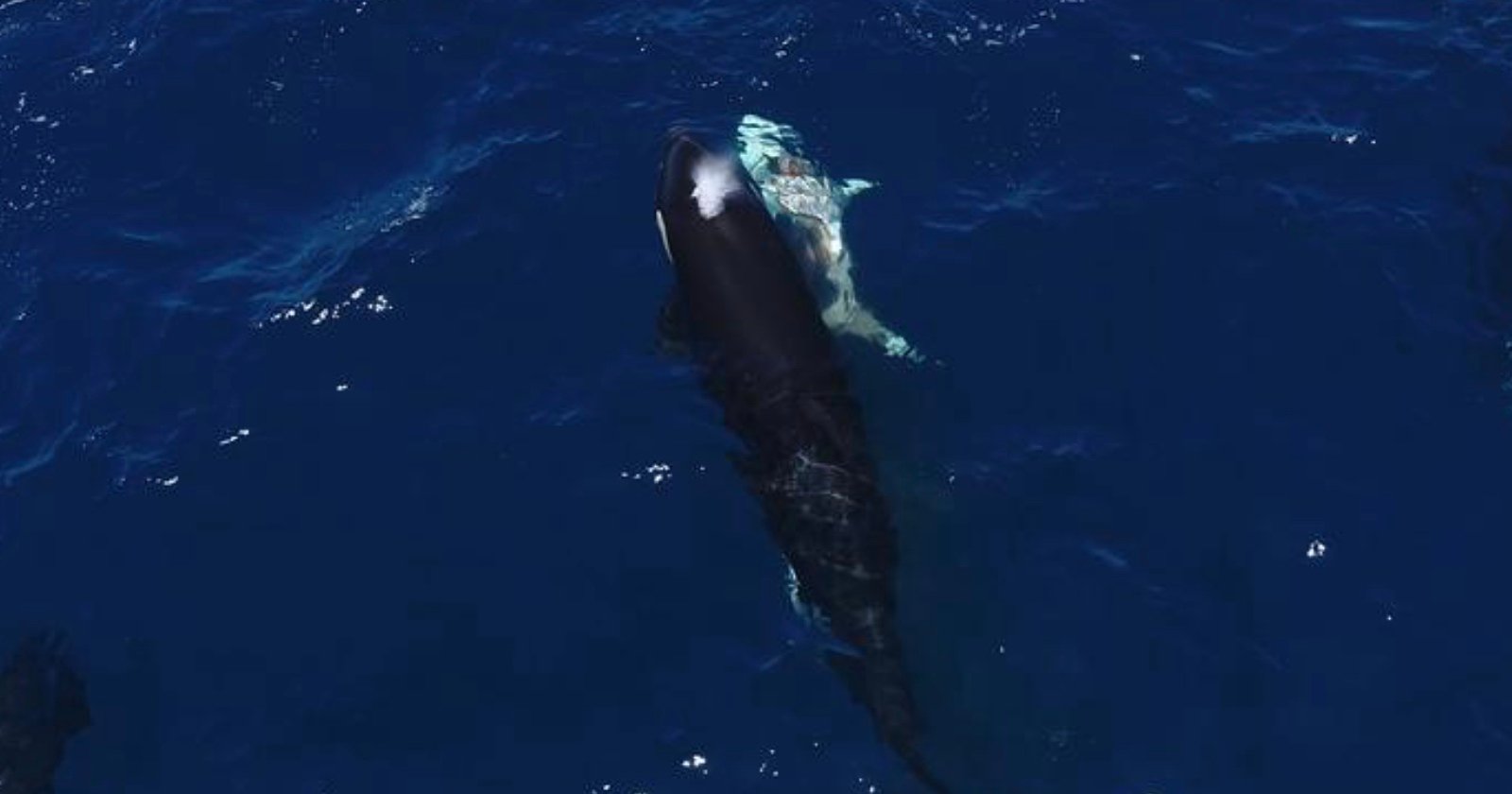Copyright PetaPixel

Scientists captured astonishing footage of a pod of orcas flipping over a great white shark to feast on its liver in a world-first. In the newly-released drone footage, a specialized group of shark-hunting orcas in the Gulf of California can be seen targeting young great white sharks — turning them upside down to extract their nutrient-dense livers. When flipped over, sharks enter a state called “tonic immobility,” a form of paralysis that leaves them unresponsive to their surroundings. Within minutes, the orcas slice open the shark’s side to remove its large, fatty liver, which they share among the pod. The rest of the carcass sinks to the seafloor. The remarkable videos were captured by marine biologist and underwater cinematographer Erick Higuera and colleague Marco Villegas. This type of behavior in orcas has never been captured on video before, according to a report by New Scientist. Higuera and Villegas recorded two separate orca hunts in the Gulf of California — one in 2020 and another in 2022. Both events show the same technique in which the orcas flip juvenile great whites onto their backs to immobilize them, then tear open the body to reach the liver. The findings, based on analysis of the two hunts, were published in a study in Frontiers in Marine Science on Monday. During the 2020 encounter, five orcas pursued a young white shark, herding it toward the surface before overturning it. Moments later, they dragged it underwater and resurfaced carrying the shark’s liver. Soon after, the pod repeated the process with another juvenile. Two years later, in August 2022, the same pod was observed performing an almost identical attack — pushing a young shark onto its back, causing it to bleed from the gills before exposing and eating its liver. In their paper, the researchers describe how orcas appear to use coordinated tactics to remove the livers of great whites, suggesting hunting of sharks may occur more often than previously believed. “This behavior is a testament to orcas’ advanced intelligence, strategic thinking, and sophisticated social learning, as the hunting techniques are passed down through generations within their pods,” marine biologist Erick Higuera Rivas, lead author of the study and project director at Conexiones Terramar and Pelagic Life, says in a press release. The group, known as Moctezuma’s pod, may also be exploiting environmental shifts. Rising ocean temperatures could be changing shark nursery zones, bringing inexperienced juveniles into the orcas’ hunting range. Scientists have used drones for nearly a decade to study orcas, and the aerial perspective has now helped uncover a previously unknown behavior in these marine mammals. Earlier this year, researchers captured drone footage of killer whales using kelp to groom one another — an extraordinary first in marine tool use.



